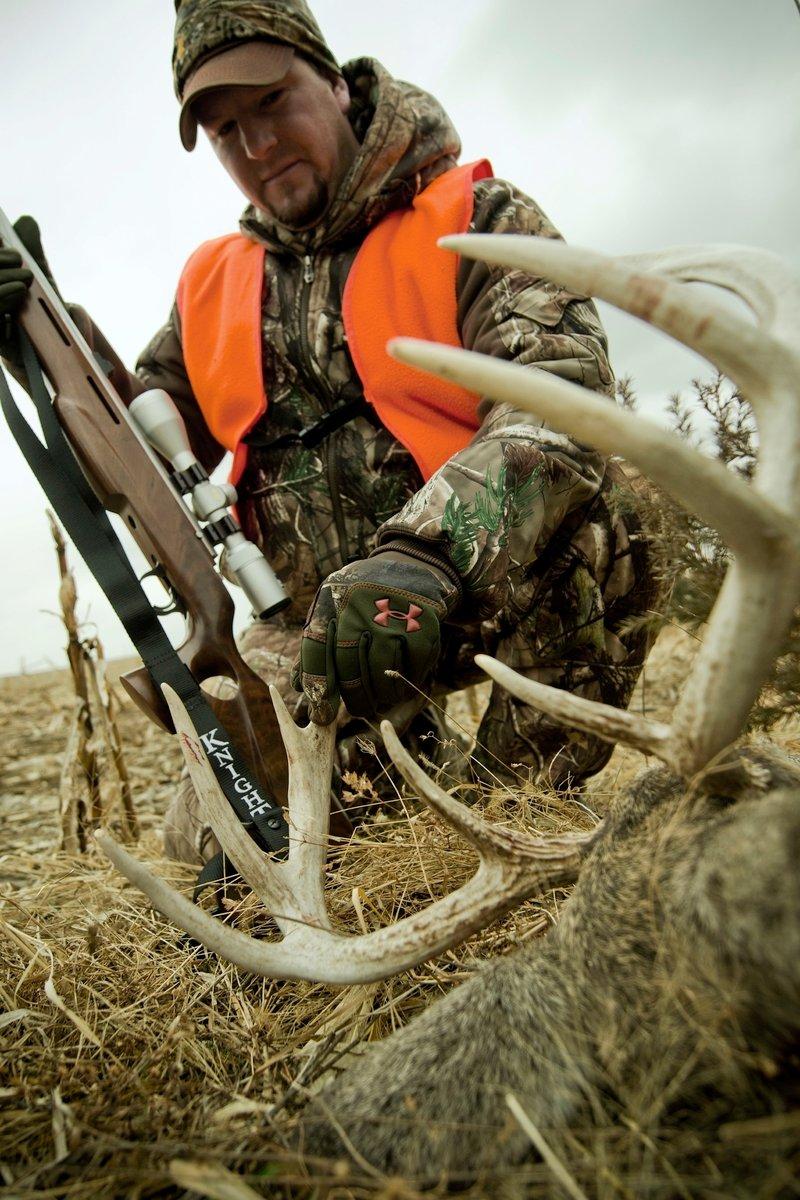The Key To Late-Season Success: It's Not the Weather
A year ago at this time, Michigan was buried under the first snowfall of what would be a record-setting winter. The power would kick off at about 7 p.m. on this date and would not return for nearly two weeks. We had a white Christmas. And a dark one.

Today, the sun is out, which is a true rarity around here this time of year. There is not a spot of snow on the ground and the long-range forecast isn't calling for any to show up any time soon.
It's supposed to hit 40 degrees today and approach 50 degrees tomorrow. The temps do drop out after that but we'll still see daytime highs in the mid-30s for the most part.
If you're still looking to fill a late-season deer tag and subscribe to the post-rut strategies often touted on TV and outdoors media, that might seem like the wrong kind of forecast. Traditional deer-hunting knowledge is that late-season success depends upon cold temperatures to get deer on their feet and hitting food sources. And it certainly can help.
But I've adjusted my hunting plans over the past five years or so and now focus my late-season outings on areas where hunting pressure has been low.
And here's something interesting: Weather has almost nothing to do with the number of deer that I see.
Michigan's muzzleloader season ended yesterday. That brought to a conclusion a 38-day stretch of nearly continuous, intense hunting pressure. Another gun season opened this morning, this time a does-only shotgun hunt in many areas of southern Michigan.
Since about 10 a.m. on November 15, natural deer movement has been greatly altered and all but stopped. Most guys will tell you that they haven't seen a buck in weeks, and feel lucky to see any deer at all.
My experience over the past week has been different. I've seen more deer over the past two weeks than I saw all season.
I haven't actually hunted in Michigan since mid-November. My goal was to hang back and allow whatever areas I could to be as free of hunting pressure as possible while monitoring what areas might have seen fewer hunters. Those are the places I'll focus on now.
We've had an unusually mild December so far. During the muzzleloader season we saw several days of 50-degree temps. Area hunters were struggling to see deer because "the weather is just too nice for them to move in daylight."
During that span, I spent evenings scouting the areas I wanted to hunt from long range and, despite the mild weather, saw plenty of deer including a few bucks. They were up and moving by 3 p.m. each day.
The home stretch has arrived. Michigan's season ends January 1. I still have two buck tags that can be used during the last days of bow season. Will I fill them? I doubt it. At this point, I think I've decided to pass on most of the bucks and allow them to age another year.
But there is always the chance a buck I want to shoot will make an appearance. If nothing else, I have doe tags to fill as well.
I always looked forward to bowhunting during the holiday break when I was in school. Hunting in the snow was something special and I once believed it was the weather that made the hunting so good. I think I was wrong. Pressure is, far and away, the deciding factor over whether late-season deer are moving or not. Back then, hunting pressure on the area I hunted was low. Thus I saw deer.
Sure, cold weather can help get deer moving. And I won't be disappointed if we get some. But cold temperatures alone will not create a successful late-season experience. Here's a prime example.
Last winter, on one of the farms I grew up hunting, a 40-acre patch of soybeans was left standing. For whatever reason, the beans were never harvested. Next to those beans were roughly 20 acres of standing corn.
With the winter weather bearing down and the snow already piling up, I figured that farm would draw deer for miles and I hunted it hard for several days. It was the textbook scenario we see touted by guys hunting unpressured deer on TV.
I never saw a deer. Not one. And my trail cameras weren't getting night photos either. The deer were not there.
Why? Because that farm is hunted as hard, if not harder, than most public hunting areas. It's a revolving door of hunters who hunt morning and evening throughout gun season, never paying any attention to wind direction or entry / exit routes.
The deer left and never came back. The fact that it was bitter cold didn't matter. The fact that it had the best possible food source for miles didn't matter. The deer lived, and moved, elsewhere.
The pressure trumped all.






